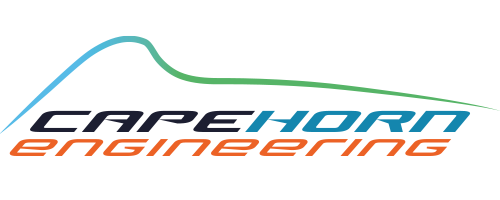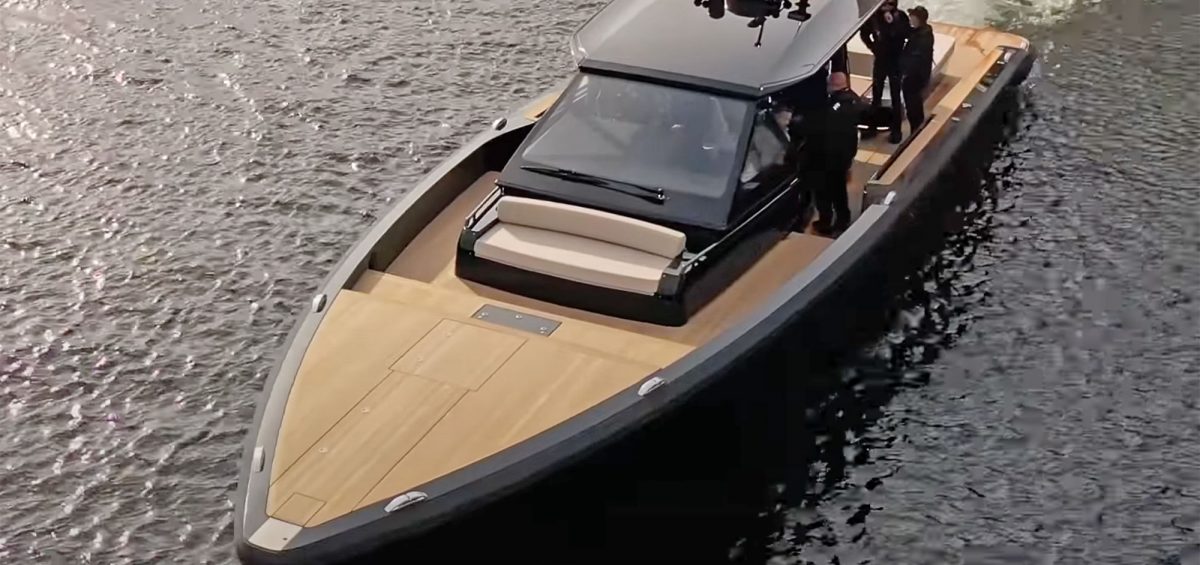
Cape Horn Engineering are proud to assist in the design for international yacht designer, Malcolm McKeon on a powerful 60ft superyacht chase-boat. The Windy SLR 60 has been designed to meet stringent requirements for long distance excursions, whilst also serving as a very nimble sports boat for diving and fishing and coastal explorations.
The SLR 60 will be able to traverse unprotected and open passages of water with ease, with a range of 850 nautical miles at 25 knots and a top speed of 44 knots, propelled by 3 Volvo Penta IPS propulsion systems. Exhilarating to drive, this incredibly responsive vessel will offer impressive acceleration and handling at speed.
Following delivery of the first SLR 60, Windy Scandinavia AB will put the design into production at the Windy yard in Sweden, establishing the 60-footer as the company’s flagship.
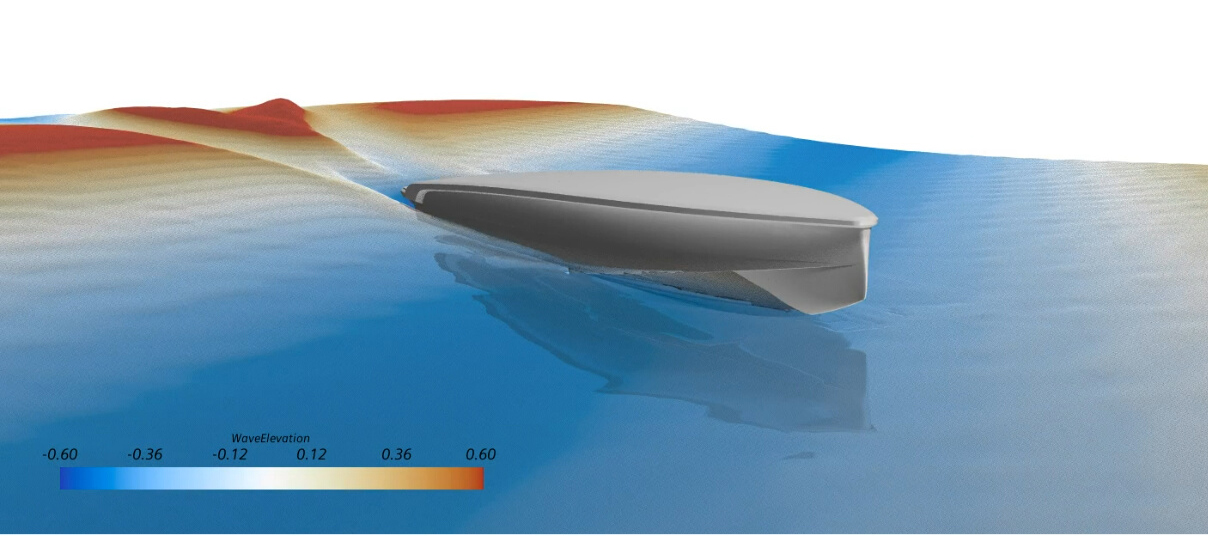
DESIGN OPTIMISATION
Dr.-Ing. Rodrigo Azcueta, Managing Director of Cape Horn Engineering comments “We conducted a rigorous testing procedure to evaluate and assess the boat’s performance in varying sea states. One of the main concerns of the client was the amount of spray that the yacht would experience when going through waves at speed. CFD investigations and analyses were conducted on how to minimise the spray or prevent spray being blown back into the boat. By optimising the design of the freeboard with a generous flare to the bow and giving special attention to the position of the multiple chines and spray rails this concern was addressed, keeping the boat as dry as possible.’’
In order to assess the possible occurrence of spray reaching the deck area, video animations of the motions and the free surface were produced to visualise any occurrence of spray, depending on the wave case and how the water impacts on the bottom and sides of the hull during slamming events. For less extreme cases, the video animations showed how effectively the spray rails and chines prevented water from reaching further up the hull, compared to cases without these features.

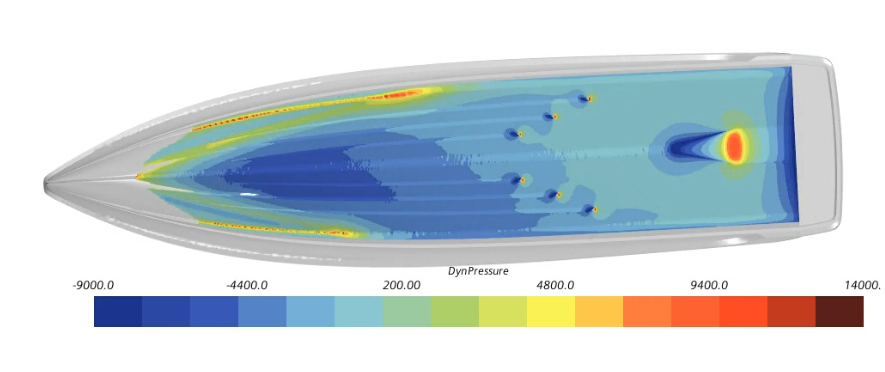

Another design consideration was the performance through the motions and vertical accelerations in waves, and the yaw moments when riding in following waves. The wave characteristics (wave heights and periods) were taken from historical data to be representative of typical Western Mediterranean and Caribbean conditions. The boat speeds that were investigated in calm water ranged from 20 to 50 knots, and in waves, from 18 to 45 knots. A comprehensive matrix of waves with varying directions, heights and frequencies were simulated and analysed. The directions included head waves, oblique from the bow and from the stern, and beam and stern waves, while the length of waves varied from short waves as found in coastal chop, up to long waves typical of open ocean. Extreme motions were captured by picking the resonance wave cases, to ensure the amount of spray and water on deck was within the limits of the design brief and to obtain the hull slamming loads for the structural design.
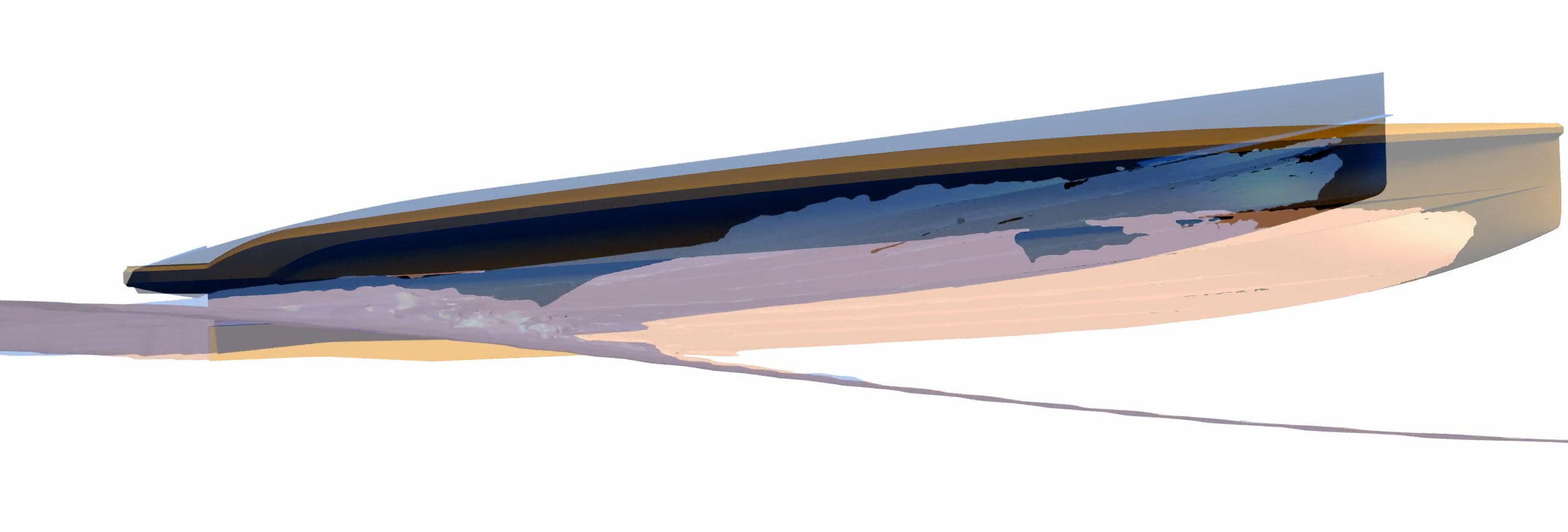
Further objectives of the study were to compare the performance of the design with its predecessor, the Windy SR 52, both in flat water and with the added resistance and motion accelerations in varying waves. The SLR 60 exhibited less motions in waves than the SR 52, with the longer hull length being of course an important parameter for attenuating motions in waves but the hull shape and volume distribution also found to significantly contribute to its seaworthiness.

Studies were also carried out to optimise the weight distribution by analysing three different centres of gravity (LCG) for the best possible performance. Vertical acceleration at 3 monitoring points of interest, forward and rear seating areas and steering wheel position, were presented as a function of the position of the craft relative to the wave. Heave, pitch and roll response amplitudes as a function of the wave height and period of encounter between the craft and the waves were also analysed.
The initial plan was to have the SLR 60 tank tested with a scaled model of the design to confirm the performance. However, as the extensive CFD reports confirmed performances which satisfied the requirements, it was decided the tank testing was no longer necessary. This decision greatly reduced the project time and made substantial development cost savings.
Collaboration with Malcolm McKeon Yacht Design / MM597
Malcolm McKeon has been a leading designer in the superyacht industry for over 30 years, taking yacht design to a new level of styling, performance and comfort. His portfolio includes more than 200 sailing and motor yachts, 50 of them in excess of 30m in length. Malcolm’s inspirational conceptual work, space planning, exterior styling and construction have reaped multiple international design awards. His green approach to projects, reducing construction and operational costs, is a key consideration for designs of the future.
Cape Horn Engineering’s long-standing collaboration with Malcolm McKeon has provided an unparalleled synergy to the design process of each yacht. Since 2016, we have built up a trusted relationship, collaborating on CFD investigations for six superyachts to ensure the highest degree of performance, comfort, stability and safety. We were delighted to be involved in performance predictions and design optimisation for the 34m Liara, built by Baltic Yachts, which was recently awarded ‘Best Exterior Design’ at the 2020 Boat International Design & Innovation Awards.
The SLR 60 features detailed design accents that mirror those of her Malcolm McKeon mothership MM597. Cape Horn Engineering were also involved with the design optimisation of the 60m superyacht – an extraordinarily advanced yacht that will harness exceptional sail power – a sleek, striking exterior design complemented by a low profile, carbon fibre superstructure. Currently in build at Royal Huisman with delivery scheduled for 2022.
